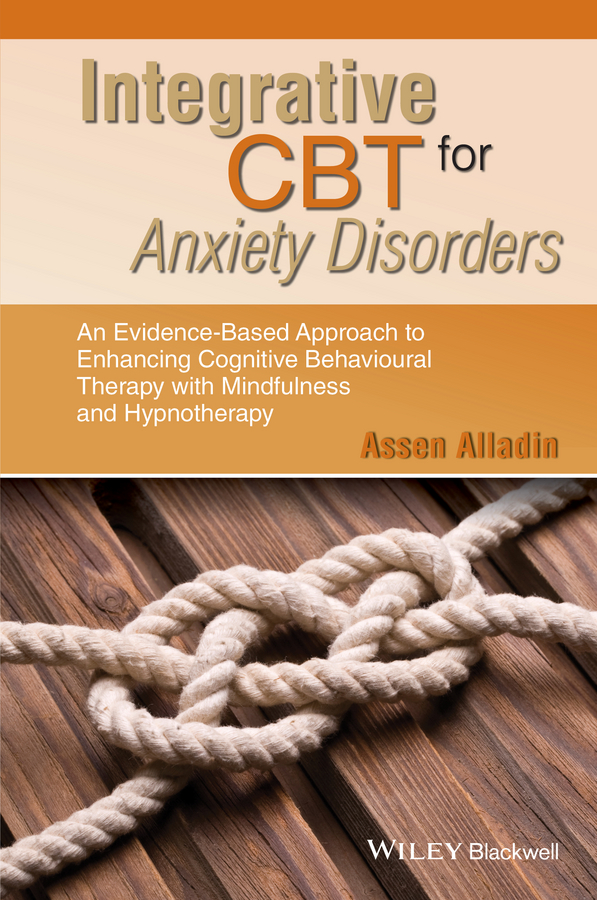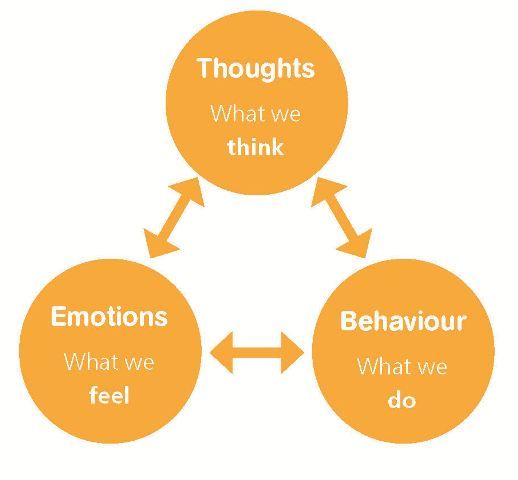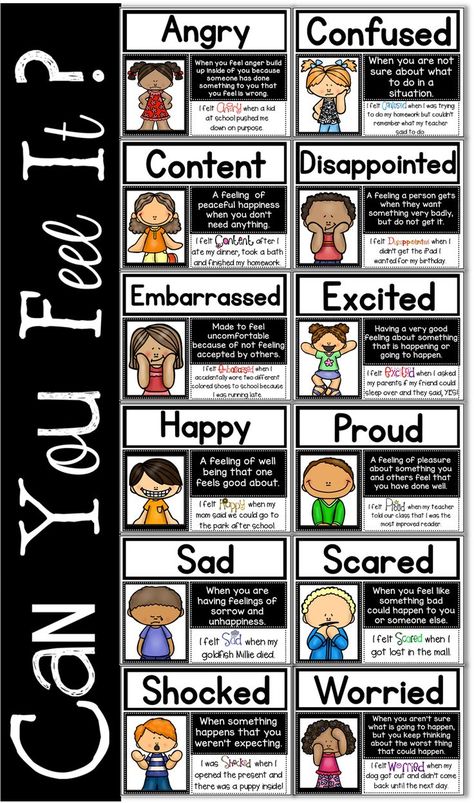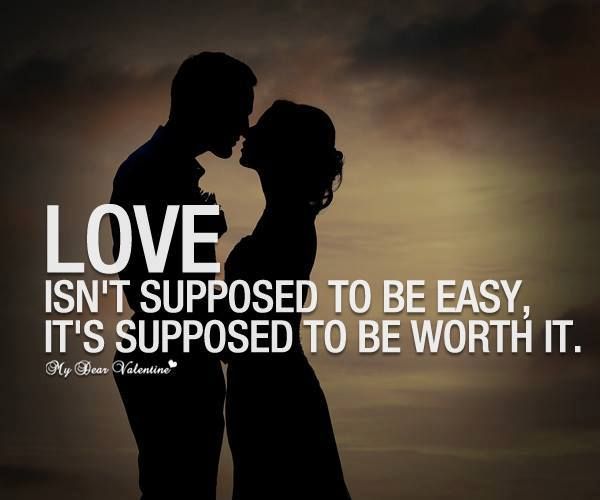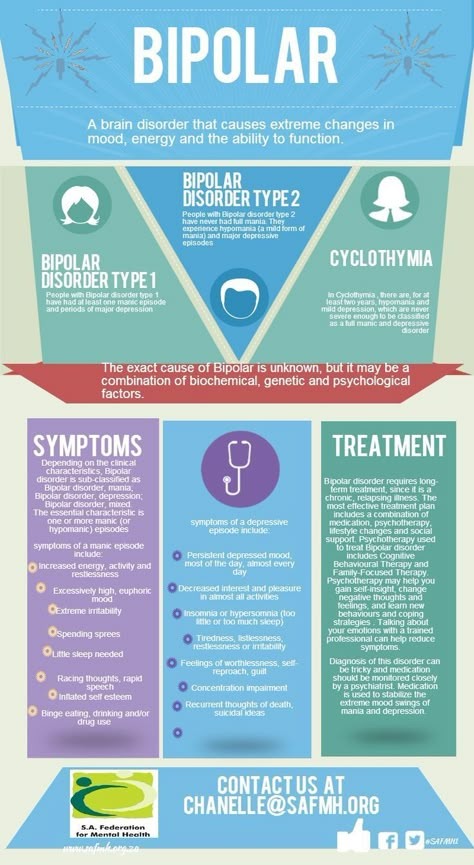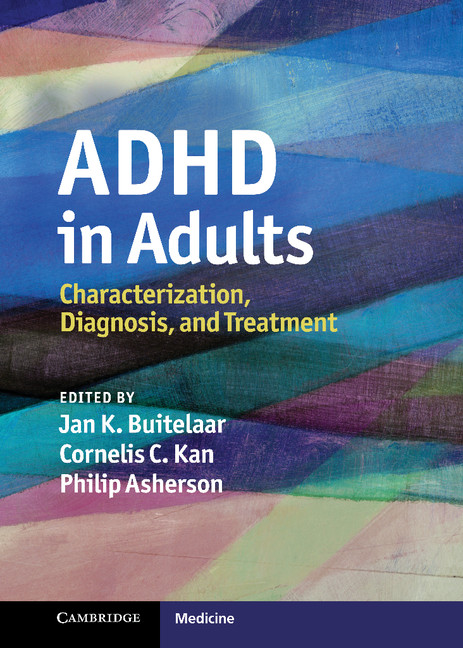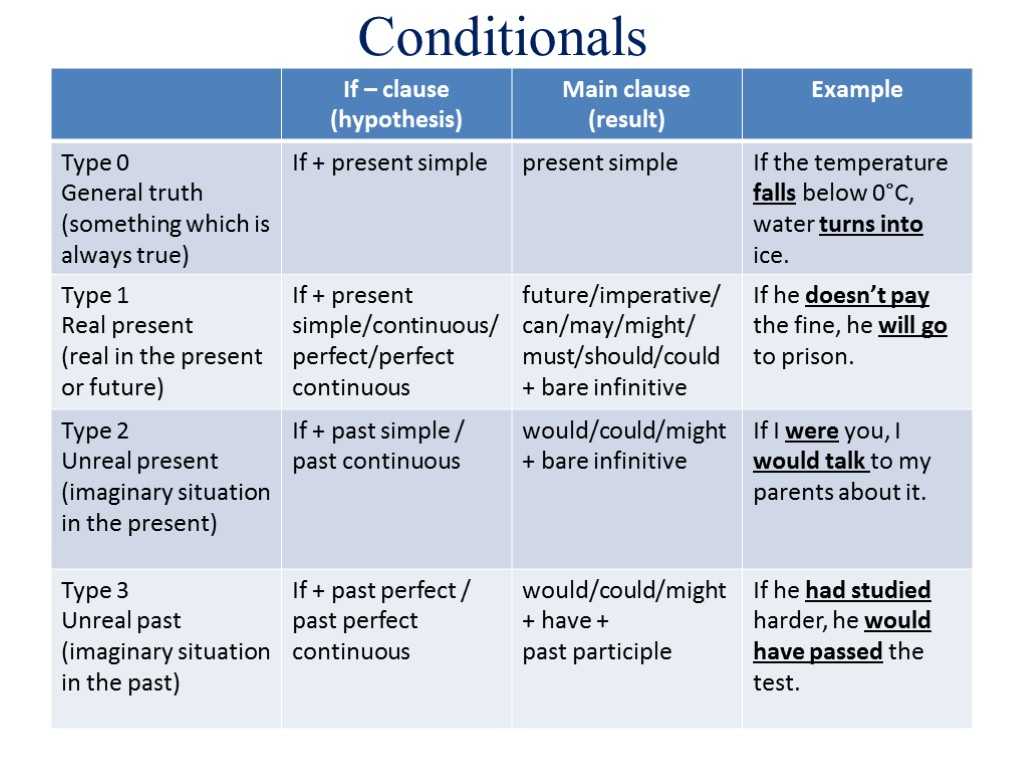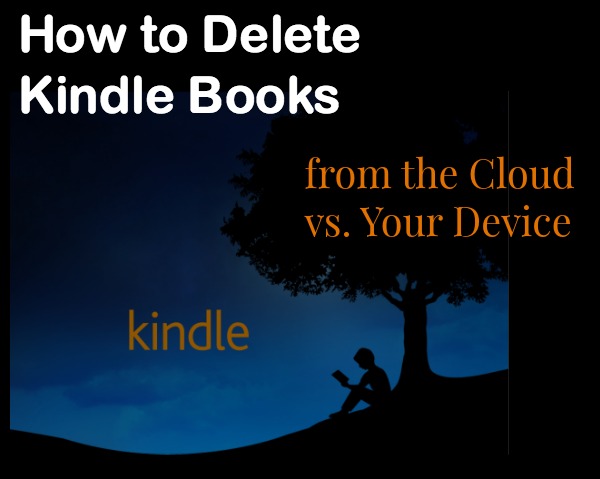Anxiety cbt book
Best Self-Help Books for Anxiety
Looking for evidence-based tools to manage anxiety? Here are five self-help books based on the principles of cognitive behavioral therapy.
Show Your Anxiety Who's Boss
Show Your Anxiety Who’s Boss by Joel Minden, PhD, offers three foundational strategies for addressing anxiety-related concerns, including worry, panic, avoidance, intrusive thoughts, and an intolerance of uncertainty. Guided by evidence-based principles of cognitive behavioral therapy (CBT), an overarching message of this book is that you can’t always control or reduce anxiety, but you do have options for responding more effectively to it.
For many of us, coping with anxiety means turning to activities to manage discomfort. It might seem reasonable enough to rely on exercise, yoga, and controlled breathing to reduce anxiety, but these strategies can be time-consuming or impractical, and their effects are inconsistent and temporary. Similar problems emerge when people use alcohol, marijuana, or even prescription medication to control anxiety.
Although these tactics might offer some relief, they also bring side effects, dependency problems, and undesired health outcomes.
Show Your Anxiety Who’s Boss argues that long-term anxiety management depends on relating differently to anxiety before deciding how to respond. Anxiety is uncomfortable, annoying, scary, and inconvenient, but it’s harmless. Judging anxiety to be a threat that must be prioritized has the unintended effect of taking attention, time, and behavior away from what truly makes life meaningful–our relationships, work, school, health, spirituality, and creativity.
This book focuses on making sense of anxiety–where it comes from, why it persists, and what to do about it. The first basic strategy involves noticing “anxious fictions,” those biased beliefs that overestimate threat and underestimate our potential to cope. Once we pay attention to these thinking traps, we can challenge them and respond with “useful predictions” that are more realistic and helpful.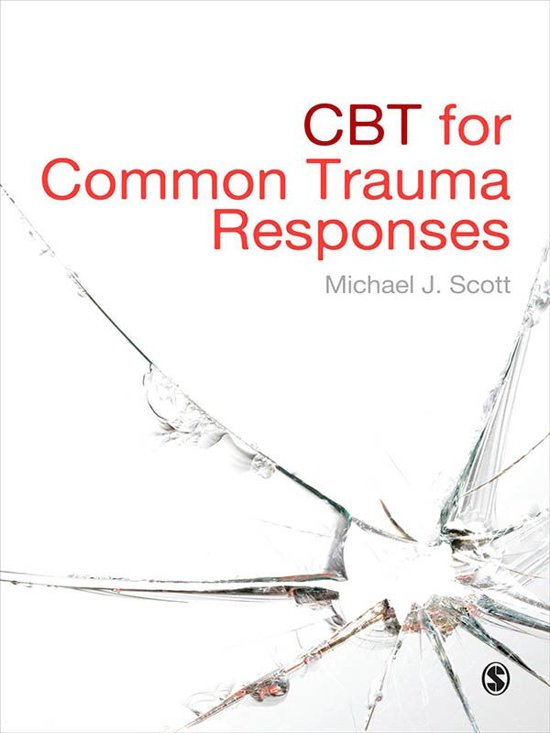
The second basic strategy involves prioritizing value-driven action over avoidance. Through journal prompts, worksheets, and practice exercises, readers learn how to identify the behaviors they value and work through anxiety to take gradual steps toward activities that promote life satisfaction and fulfillment.
The final strategy involves becoming a better observer of the four parts of anxiety (your STUF: sensations, thoughts, urges, and feeling labels), and responding with objectivity, insight, humor, and self-compassion.
Collectively, the foundational practices in this book help readers stand up to anxiety and respond–not with worry or avoidance–but with useful beliefs and plans, value-driven action, and the ability to work through the difficult thoughts and feelings that stand out whenever we’re faced with an upcoming challenge.
For editorial reviews of Show Your Anxiety Who’s Boss, click here. To order from Amazon, click here.
Coping with Anxiety
Coping with Anxiety by Edmund Bourne, PhD, and Lorna Garano offers a wonderful collection of tools to reduce anxiety.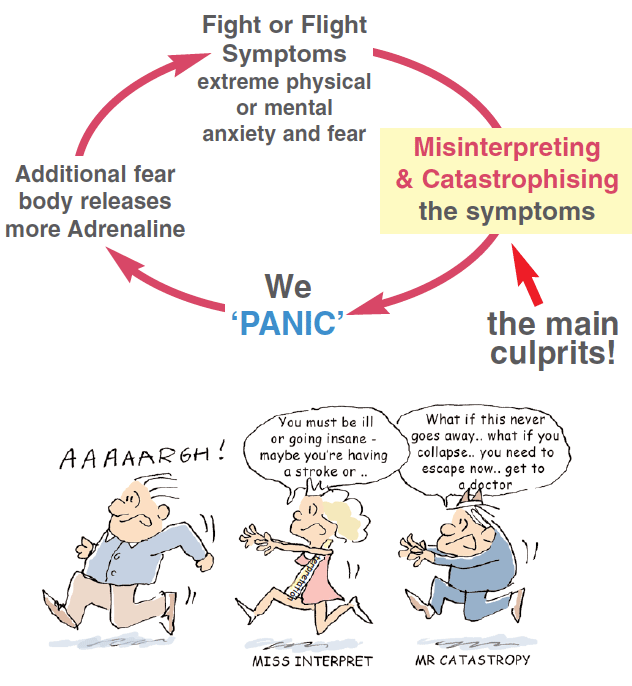 For each strategy, the authors present a clear, user-friendly rationale based on research and clinical practice. Although the book offers a balanced consideration of both medical and psychosocial treatments, the primary focus is psychosocial. Little time is spent on case examples, which I find refreshing when I’m looking quickly for practical ideas.
For each strategy, the authors present a clear, user-friendly rationale based on research and clinical practice. Although the book offers a balanced consideration of both medical and psychosocial treatments, the primary focus is psychosocial. Little time is spent on case examples, which I find refreshing when I’m looking quickly for practical ideas.
Each of the ten chapters covers techniques to address somatic, cognitive, or behavioral aspects of anxiety. Throughout, the guidelines are to-the-point, easy to follow, and effective. Although the relaxation and cognitive strategies are similar to those found in other books, Coping with Anxiety also emphasizes the value of aerobic exercise, nutrition, supplements, sleep, and downtime.
The new edition also goes beyond the tried-and-true cognitive behavioral methods and acknowledges recent research on acceptance-based therapies, the use of apps for music and relaxation scripts, and imagery exposure. If you’re looking for a multi-modal system for controlling symptoms, this should absolutely be near the top of your list of self-help books.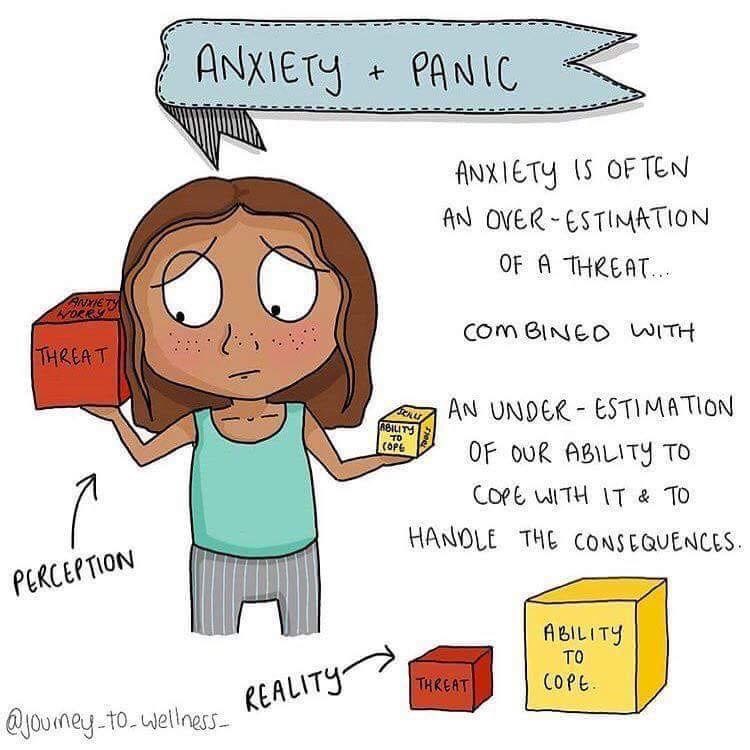 To order from Amazon, click here.
To order from Amazon, click here.
The Worry Cure
The Worry Cure by Robert Leahy, PhD, examines the cognitive process at the heart of generalized anxiety: worry. Worrying is a double-edge sword because the consequences can be both good and bad.
For some people, worrying about responsibilities, upcoming events, and social obligations leads to problem-solving behavior, productivity, and an awareness of coping skills.
But when worrying involves thinking repeatedly about uncontrollable events, showing little or no tolerance for uncertainty, and worrying about worrying itself, patterns of avoidant behavior and gripping anxiety are likely to follow.
In this book, Dr. Leahy, one of the most well-regarded clinical psychologists in the field of cognitive therapy, presents seven steps anyone can follow to address worrying problems. Although the author has written extensively for the scientific community, here he targets regular folks with no background in academic psychology.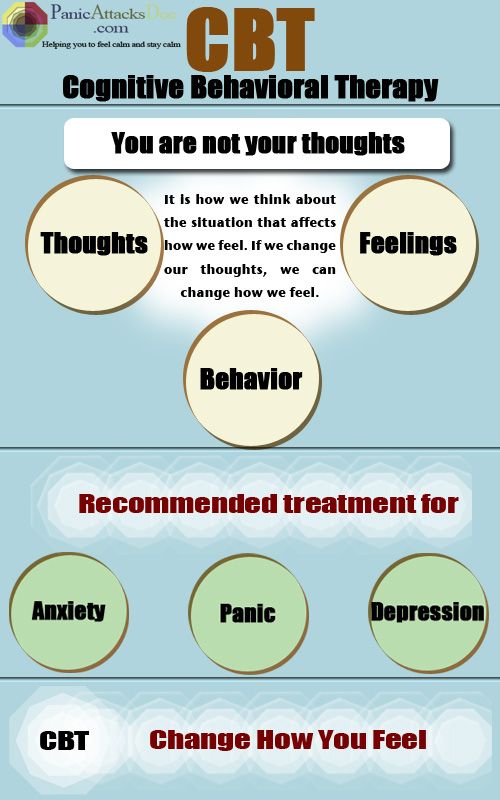 But this is not your average self-help book–the suggestions provided are evidence-based and useful for consumers and mental health professionals alike.
But this is not your average self-help book–the suggestions provided are evidence-based and useful for consumers and mental health professionals alike.
Worksheets are provided to evaluate the extent of worrying, patterns of dysfunctional thinking, core beliefs, and emotional reactions. The book also helps readers to distinguish between productive and unproductive worry, accept uncertainty, and challenge errors in thinking, such as predicting the worst or believing specific setbacks can be generalized to other situations. The book concludes with suggestions for specific problems, including social discomfort, relationship problems, work stress, health worries, and financial concerns. To order from Amazon, click here.
The Generalized Anxiety Disorder Workbook
The Generalized Anxiety Workbook is another great resource for those struggling with worry and anxiety about an unpredictable future. This book is a nice companion for those already working with a therapist, but it functions well as a standalone self-help book for anyone with mild symptoms.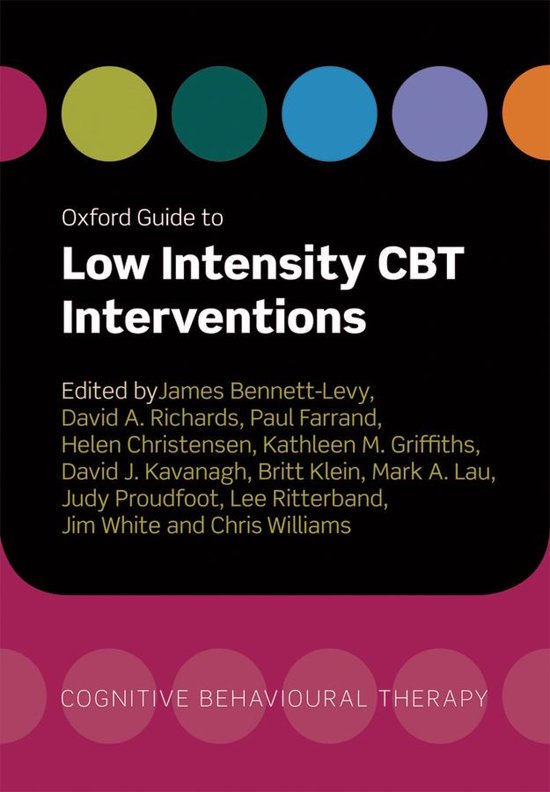 Authors Melisa Robichaud, PhD, and Michel Dugas, PhD, offer a nice overview of the basics of CBT, common cognitive errors used by chronic worriers, an evaluation of the impact of beliefs about uncertainty, and a discussion of the “safety” behaviors many people use to cope.
Authors Melisa Robichaud, PhD, and Michel Dugas, PhD, offer a nice overview of the basics of CBT, common cognitive errors used by chronic worriers, an evaluation of the impact of beliefs about uncertainty, and a discussion of the “safety” behaviors many people use to cope.
Throughout the book, the authors do an outstanding job of helping the reader consider the possibility that an uncertain future can be viewed with enthusiasm rather than anxiety. The section on using behavioral experiments to test the accuracy of predictions is great, as is the breakdown of steps involved in identifying obstacles and problem solving. The focus on relapse prevention is also excellent. Readers who find it difficult to pinpoint their cues and triggers (e.g., “I worry about everything”) will find much to value in this workbook. To order from Amazon, click here.
The Anxiety and Worry Workbook
The Anxiety and Worry Workbook explains the assumptions and practices of cognitive therapy, the cognitive and behavioral characteristics of anxiety, and step-by-step strategies to overcome significant problems.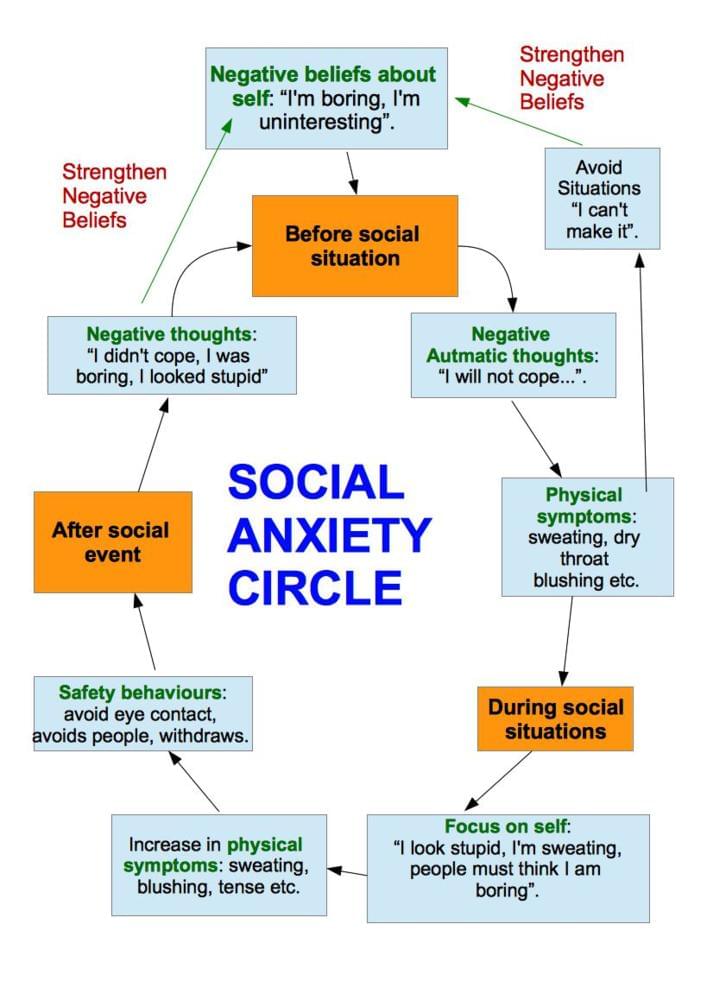
Authors David Clark, PhD, and Aaron Beck, MD, leaders in the field of cognitive therapy, indicate that the thought of imminent danger is at the heart of all anxiety, which is why addressing patterns of thinking is so important in treatment.
The book provides detailed explanations of the cognitive elements of anxiety, particularly the tendency to overestimate danger and underestimate personal coping resources. The authors include many useful checklists and worksheets to help the reader systematically approach the process of anxiety reduction. At the end of each chapter is a clear summary of key ideas in bullet points. The authors recognize that some of the principles of CBT can be difficult to implement, so they also offer troubleshooting tips to make the process of change more manageable. For individuals with social anxiety, an entire section of the book is devoted to identifying and managing negative thoughts about interpersonal situations. Finally, one of the many strengths of the book is the section on introducing an exposure plan, which is particularly important for those who can identify cues or triggers that lead to patterns of avoidance. To order from Amazon, click here.
To order from Amazon, click here.
30 Best CBT Books to Master Cognitive Behavioural Therapy
Cognitive-behavioral therapy (CBT) is a type of therapy that has been used for decades to treat a variety of disorders, from depression and anxiety to eating disorders and insomnia.
One of the exciting aspects of CBT is that it can either be used by therapists to treat their clients or by people who want to treat themselves.
These are the 30 best books for teaching yourself CBT, whether you are a clinician or a client, and whether you already know a little bit about what is CBT or know absolutely nothing.
Before you read on, we thought you might like to download our 3 Positive CBT Exercises for free. These science-based exercises will provide you with a detailed insight into Positive CBT and will give you the tools to apply it in your therapy or coaching.
This Article Contains:
- 7 Best CBT Books for Learning CBT as a Therapist
- Cognitive Behavioural Therapy Books for Treating Client’s Anxiety
- 5 Best-Selling CBT Books on Amazon
- CBT Audio Books
- Cognitive-Behavioural Therapy for Dummies (Short review + Summary)
- Cognitive-Behavioral Therapy: Teach Yourself (Short review + Summary)
- A Take-Home Message
7 Best CBT Books for Learning CBT as a Therapist
These are the best books for learning about CBT as a therapist, for the purposes of treating clients.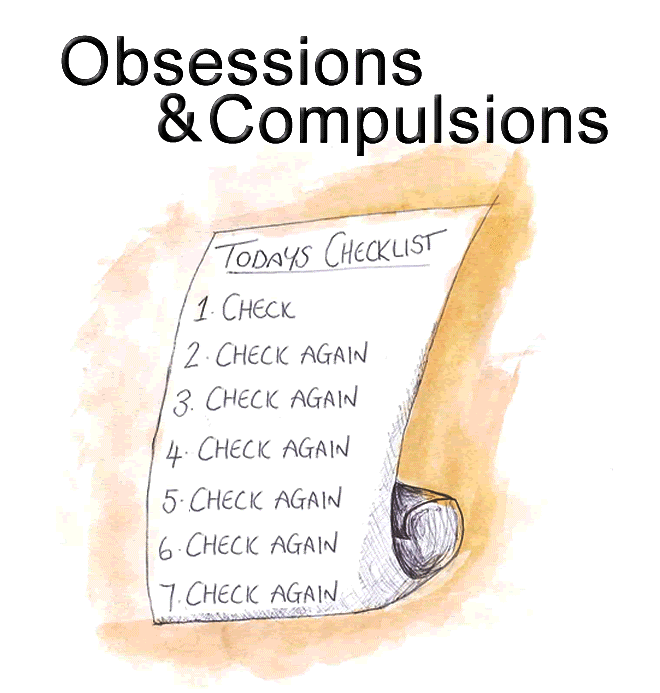
1.
Cognitive Behavior Therapy, Second Edition: Basics and Beyond – Judith S. Beck and Aaron T. BeckThis book, from CBT expert Judith Beck, the daughter of CBT founder Aaron Beck, is perhaps the best way for therapists to start learning about CBT. The book walks the reader through a CBT program from determining how to treat a client to executing that treatment plan.
The book also includes a thorough case study, so therapists can see what CBT looks like in action. It is a comprehensive manual which is also written to be accessible, so any therapist can start learning regardless of how much they know about CBT before starting the book.
2.
A Therapist’s Guide to Brief Cognitive Behavioral Therapy – Jeffrey A. CullyThis book, sponsored by the Department of Veterans Affairs in the United States, was written specifically for the purpose of giving therapists a beginner’s foundation in CBT.
The authors explicitly say this book is not meant for advanced practitioners, meaning absolute beginners can pick this book up and start learning about how to administer CBT.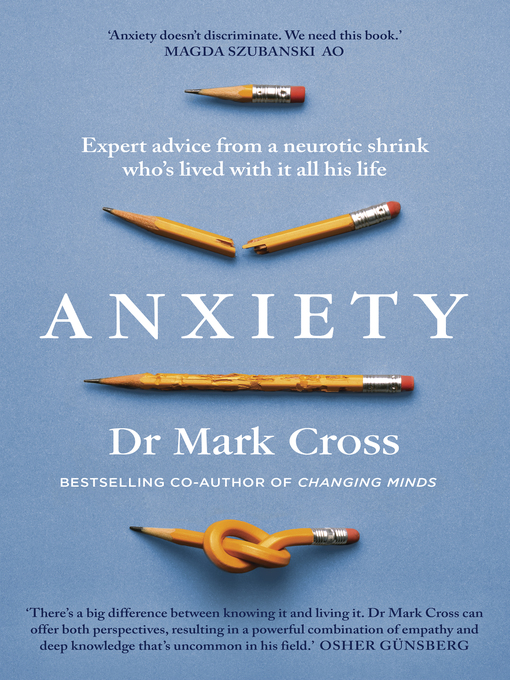
It is available online for free in PDF form, and can be found here.
3.
The CBT Toolbox: A Workbook for Clients and Clinicians – Jeff RiggenbachAs the title suggests, this book is meant for teaching CBT to both therapists and their clients, which means that therapists can even recommend this book to clients for their own use. The author studied CBT at the Beck Institute of Cognitive Therapy and Research, so the lessons contained within are well-informed.
The book recognizes that there is no “one size fits all” approach to therapy, so it contains a few different CBT exercises for different situations. This is an excellent book for therapists to start learning about CBT, no matter what their client’s needs are.
4.
CBT Worksheets: CBT Worksheets for CBT therapists in training – Dr James Manning and Dr Nicola RidgewayThis book is not a comprehensive guide to learning CBT, but a supplemental resource which can help therapists develop specific treatment plans.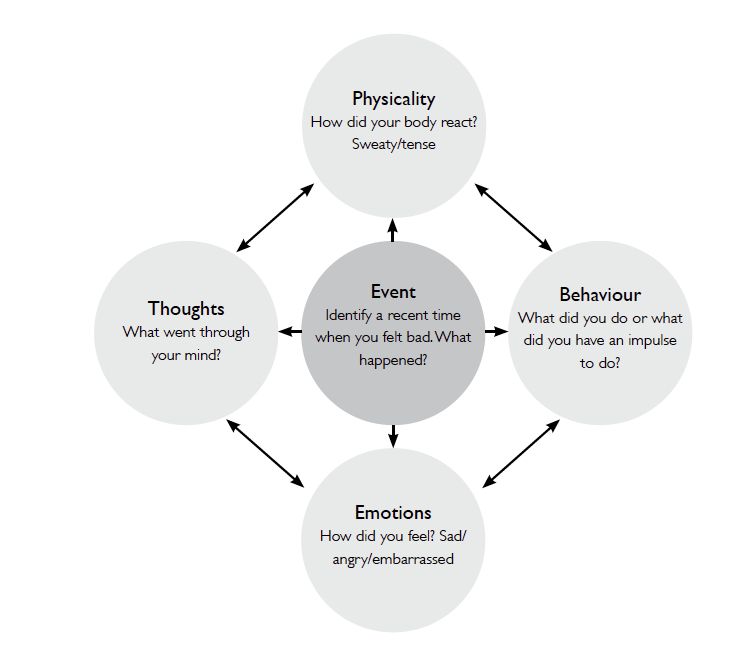
It is a collection of CBT worksheets that therapists can give their clients to start working through during or outside of therapy sessions.
Therapists learning about CBT will find this resource helpful for solidifying their understanding by showing how CBT works in practice rather than only learning about it in theory.
5.
Let’s Think About Feelings: Tools for Child-Friendly CBT – Marcie Yeager LCSW and Daniel Yeager LCSWThis book is unique on this list because it is not necessarily for learning about CBT, but for learning about using CBT with children. In fact, the authors state that therapists reading this book should already have a foundation in CBT to get the most out of this book.
That said, this is an important book to include because therapists who want to start administering CBT to children might not know where to start, and this book is an excellent introduction. The book also includes several exercises and worksheets to make CBT more accessible and fun for children.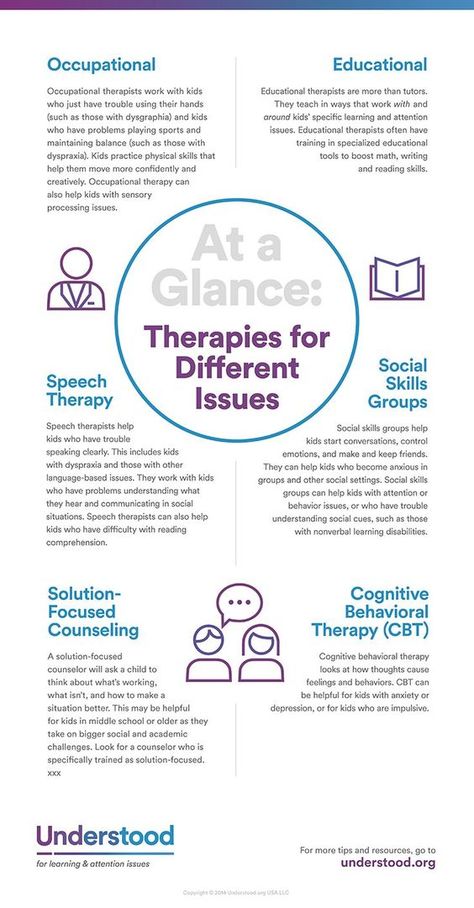
6.
CBT for Chronic Pain and Psychological Well-Being; A Skills Training Manual Integrating DBT, ACT, Behavioral Activation and Motivational Interviewing – Mark CarlsonThis book is meant to be a manual for teaching therapists about CBT, especially for the purposes of treating chronic pain. The book takes a broad approach to CBT, incorporating lessons from other types of therapies, including Behavioral Activation and Motivational Interviewing.
The author’s goal is to present the therapist with a wealth of information from which the therapist can pick and choose what goes into their client’s personalized treatment plans. This book is an excellent option for anyone who likes having all of the information available to them, even if it is not all strictly necessary.
7.
Doing CBT: A Comprehensive Guide to Working with Behaviors, Thoughts, and Emotions – David F. TolinThis is another introductory CBT book which can be used by both therapists and their clients.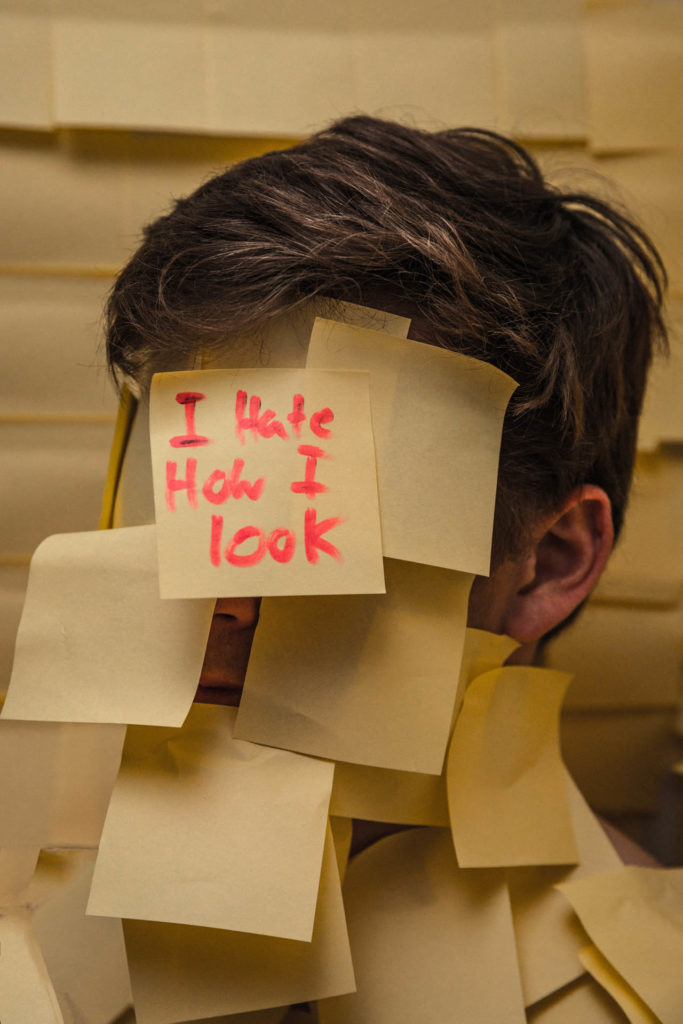 The book is meant to be accessible but comprehensive, with every aspect of CBT explained, along with three separate case examples that are discussed at length.
The book is meant to be accessible but comprehensive, with every aspect of CBT explained, along with three separate case examples that are discussed at length.
The book also includes worksheets and exercises, so it not only teaches therapists how to administer CBT in theory but also helps therapists develop concrete treatment plans for their clients. Since this book includes three extensive case studies rather than just one, it is a great option for people who like learning by following along with examples.
Cognitive Behavioural Therapy Books for Treating a Client’s Anxiety
These are the best books for learning about CBT for the purposes of specifically treating anxiety, whether you are a clinician or a client.
1.
The Cognitive Behavioral Workbook for Anxiety: A Step-By-Step Program – William J. Knaus and Jon CarlsonThis book uses the teachings of CBT along with the teachings of rational emotive behavior therapy (REBT) to help people overcome their feelings of anxiety and panic.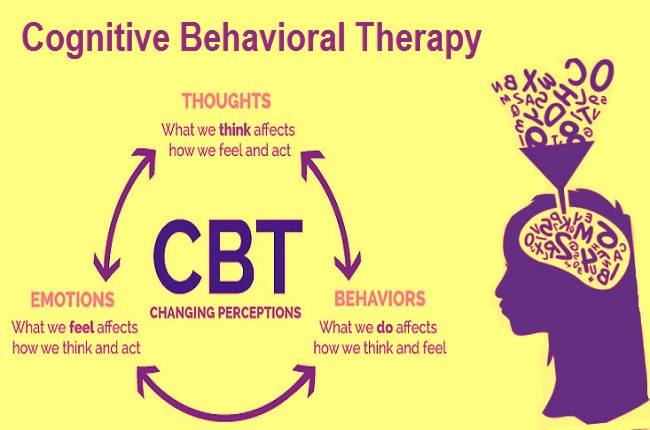 It is meant to be used by clients either by themselves or with the guidance of a therapist.
It is meant to be used by clients either by themselves or with the guidance of a therapist.
Rather than just presenting information about CBT, the book presents a step-by-step program that readers can follow along with to improve their own lives and start getting over anxiety. This is a great option for anyone who feels powerless when they are overcome by their anxiety and is looking for an actionable way out of that feeling.
2.
The Worry Workbook for Teens: Effective CBT Strategies to Break the Cycle of Chronic Worry and Anxiety – Jamie A. Micco PhDThis book is aimed at teenagers who want to use CBT to quell the anxiety in their lives. It aims to be a fun read that teenagers can work through to get at the root of their anxiety.
One of the ways the author does this is by conceptualizing anxiety-provoking thoughts as “junk mail”. Like many of the books on this list, it is meant to be used by clients either on their own or with the guidance of their therapists.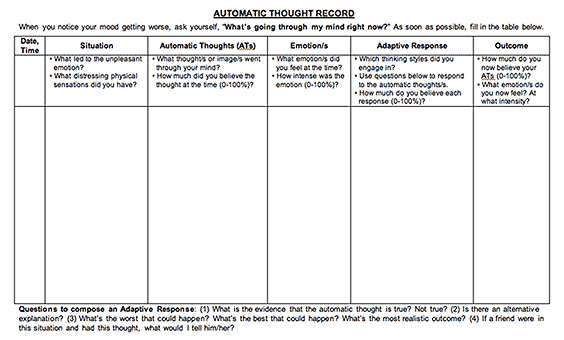
This is a great option for teenagers who spend too much of their time worrying about things in their lives like tests and relationships, whether or not they conceptualize those worries as anxiety.
3.
CBT Strategies for Anxious and Depressed Children and Adolescents: A Clinician’s Toolkit – Eduardo L. Bunge, Javier Mandil, Andres J. Consoli, Martin Gomar and Bruce F. ChorpitaThis book on CBT for anxiety is not only aimed at teenagers but children as young as seven years old as well. While the above book by Micco is aimed at either clinicians or their clients, though, this book is more meant to be used by therapists to treat their seven to 18-year-old clients.
The book includes several worksheets and exercises that therapists can provide their clients with to help the process along. From examples of specific cases to address common problems that can arise during CBT, this book is an excellent option for anyone treating adolescents with anxiety issues.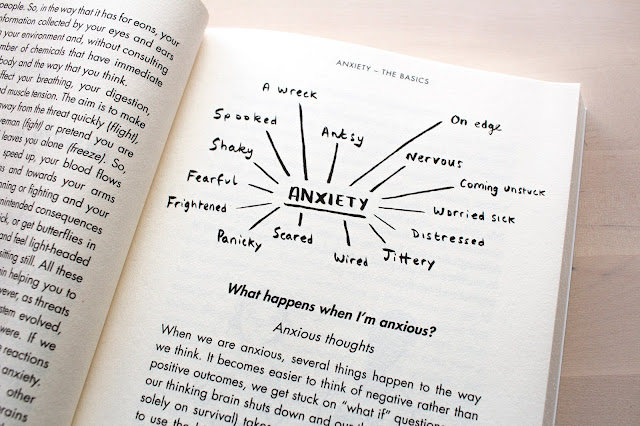
4.
The Anxiety and Worry Workbook: The Cognitive Behavioral Solution – David A. Clark and Aaron T. BeckThis book, co-authored by the founder of CBT, Aaron Beck, is all about using the teachings of CBT to control your levels of anxiety. The teachings within include helping you identify anxiety triggers and how to respond to them, as well as more long-term solutions for reducing your levels of anxiety.
The included exercises and worksheets are meant to help you conquer anxiety on your own pace, one step at a time, whether or not you are being guided by a therapist.
5.
Retrain Your Brain: Cognitive Behavioral Therapy in 7 Weeks: A Workbook for Managing Depression and Anxiety – Sith J. Gillihan PhDAs suggested by the title, this book has a simple aim: to teach you how to use CBT to start treating your depression or anxiety in just seven weeks. The author is a therapist who has condensed his experience as a psychologist in this seven-week course that anybody can start taking.
This seven-week course is meant to teach you all about CBT and how you can use it yourself, and the goal is that by the end of seven weeks you will know enough to use CBT in the future whenever you need it.
This is an excellent choice for anyone who cannot or does not want to necessarily be guided by a therapist, but still wants to follow a concrete treatment plan.
6.
The Generalized Anxiety Disorder Workbook: A Comprehensive CBT Guide for Coping with Uncertainty, Worry, and Fear – Melissa Robichaud, Michael J. Dugas and Martin M. AntonyThis book is aimed at people with a generalized anxiety disorder (GAD) who want to use CBT to reduce their anxiety symptoms. This means that it might be more helpful for people who struggle mightily with anxiety rather than those who only occasionally experience anxiety.
The authors are both CBT experts, as Robichaud is the co-founder of the Vancouver CBT Centre, so the lessons within come from respected authorities on CBT.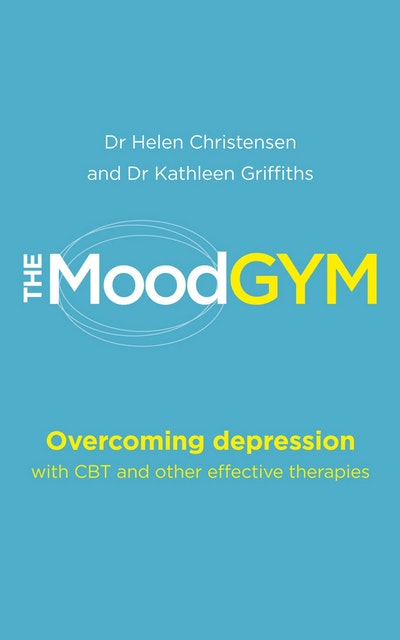 This book is a good option for anyone who struggles with GAD and wants to put an end to their anxiety symptoms, including issues with fatigue and concentration.
This book is a good option for anyone who struggles with GAD and wants to put an end to their anxiety symptoms, including issues with fatigue and concentration.
7.
CBT For Anxiety Disorders: A Practitioner Book – Gregoris Simos and Stefan G. HofmannThis book on CBT is meant to provide readers with extremely up-to-date information (as of 2013) on CBT, from new approaches to modern research developments. This makes it a good way to learn about CBT as it stands today, whether you know all about CBT or are just starting to learn about it.
It is meant to be for practitioners, whether they are practicing therapists or studying to be therapists, and is an excellent way for anyone who wants to know the state of CBT in the modern world, not just as it was first conceptualized a few decades ago.
8.
Starving the Anxiety Gremlin: A Cognitive Behavioural Therapy Workbook on Anxiety Management for Young People (Gremlin and Thief CBT Workbooks) – Kate Collins-DonnellyThis book is aimed at young children with anxiety who might not even yet understand the idea of anxiety.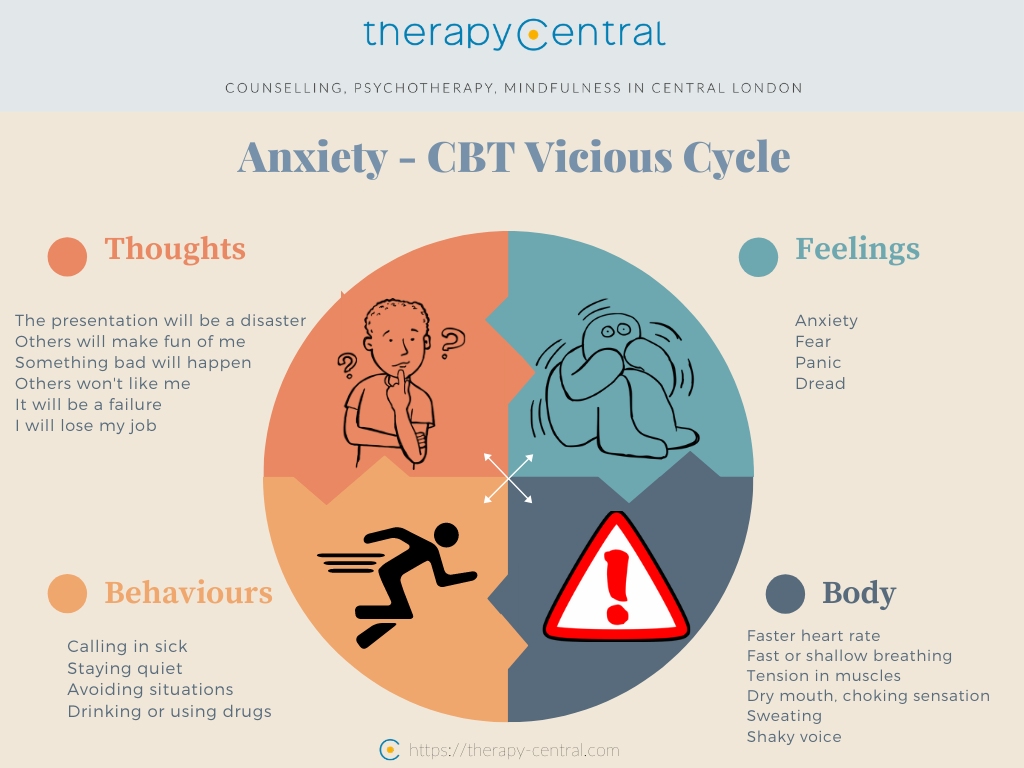 It conceptualizes anxiety as a “gremlin” which children can either feed or starve with anxious thoughts, or the lack thereof.
It conceptualizes anxiety as a “gremlin” which children can either feed or starve with anxious thoughts, or the lack thereof.
The target audience is children 10 years old or older, and they can either work through the book with a parent or therapist or work through the book by themselves.
This book is an excellent way to teach children about anxiety as well as ways they can manage their anxiety on their own.
9.
Change Your Thinking: Overcome Stress, Anxiety, and Depression, and Improve Your Life with CBT – Sara Edelman PhDThis book is focused on teaching the reader ways they can use the teachings of CBT to conquer their feelings of anxiety, along with their feelings of stress or depression.
The author conceptualizes anxiety-, stress-, and depression-causing thoughts as “thinking errors” and teaches you how to recognize and respond to these when they occur.
The idea is that eventually, after learning enough about CBT, you can stop these thoughts before they even come to mind.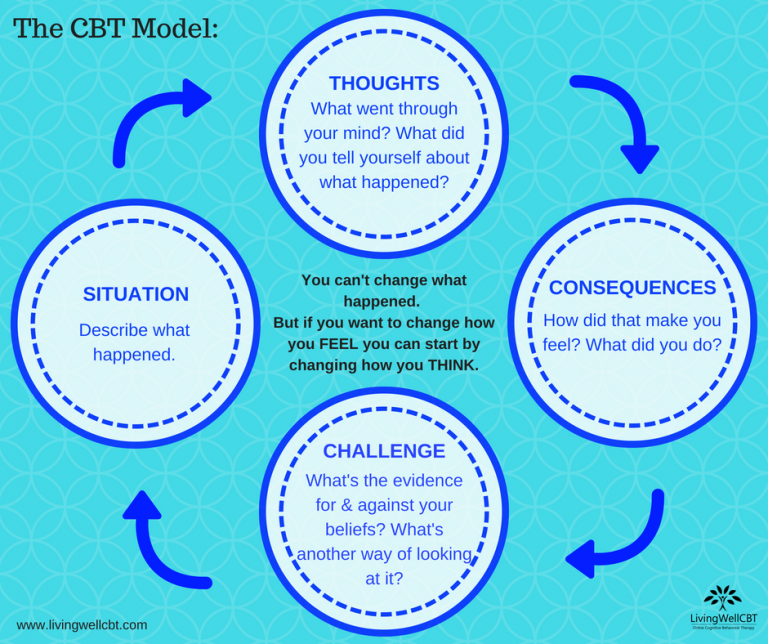 The book is written for a non-academic audience, but the author is a certified psychologist with decades of experience in the field and with CBT.
The book is written for a non-academic audience, but the author is a certified psychologist with decades of experience in the field and with CBT.
10.
Treatment Plans and Interventions for Depression and Anxiety Disorders, Second Edition – Robert Leahy PhD, Stephen J.F. Holland and McGinn, Lata McGinn PhDThis book is a comprehensive approach to using CBT to treat major depressive disorder, along with six anxiety disorders. The authors describe many different ways CBT can be administered and provide evidence to back up their claims.
The book also includes several worksheets and exercises that can be incorporated into a treatment plan. Any therapist who is looking to start administering CBT in their practice can look to this book to help them develop a complete treatment plan for anxiety or depression.
5 Best-Selling CBT Books on Amazon
These are the 5 best Amazon bestsellers about CBT, for people who like books that have already been proven popular and useful by many readers before them.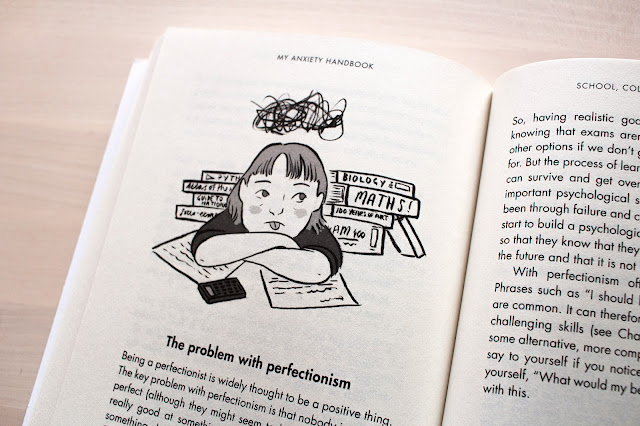
1.
Cognitive Behavioural Therapy: 7 Ways to Freedom from Anxiety, Depression and Intrusive Thoughts – Lawrence WallaceThis book is aimed at people dealing with anxiety, depression, or other types of negative, intrusive thoughts. It is a written by someone who used the teachings of CBT to get over their own issues with these thoughts and incorporates Buddhist and Stoic teachings along with CBT to deliver a treatment plan to the reader.
This book is not meant for therapists and is not written by a clinician, but it has found success as a self-help manual using the teachings of CBT.
2.
Mind Over Mood, Second Edition: Change How You Feel by Changing the Way You Think – Dennis Greenberger, Christine A. Padesky and Aaron T. BeckThe authors of this book claim it has been used by over 1,000,000 people to conquer various issues, from eating disorders to anxiety to addiction. This second edition includes 20 more years of research backing up CBT’s effectiveness.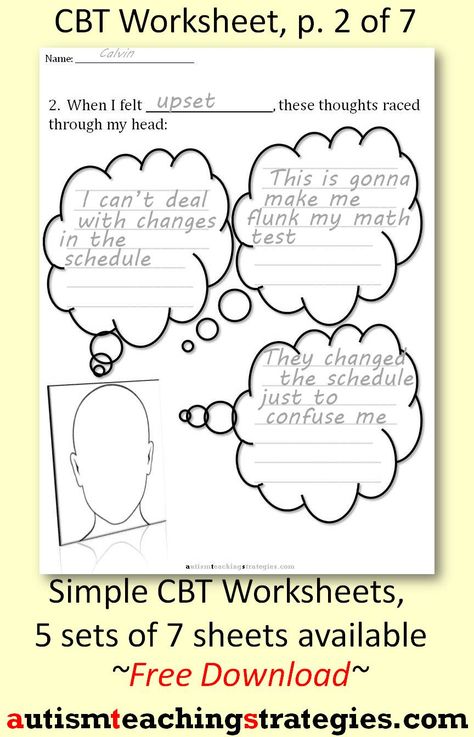
The book includes several CBT-based strategies and exercises you can use to conquer whatever is blocking your wellbeing, with personalized exercises for issues like depression and guilt.
This is an excellent option for anyone who likes proven commodities, as this has been an influential CBT book for non-clinicians for decades.
3.
The Anxiety and Phobia Workbook – Edmund J. BourneThis book, now in its sixth edition, has been used for decades to help treat a variety of disorders, including GAD, post-traumatic stress disorder (PTSD), and obsessive-compulsive disorder (OCD).
It is aimed at people who struggle with these disorders, as well as clinicians who are working with people who struggle with these disorders.
While it is aimed at a variety of disorders, it is best suited for people who deal with anxiety and phobias, as the title suggests. This is a great option for anyone who works best with a program they know they can trust, as this book has been teaching people CBT for thirty years.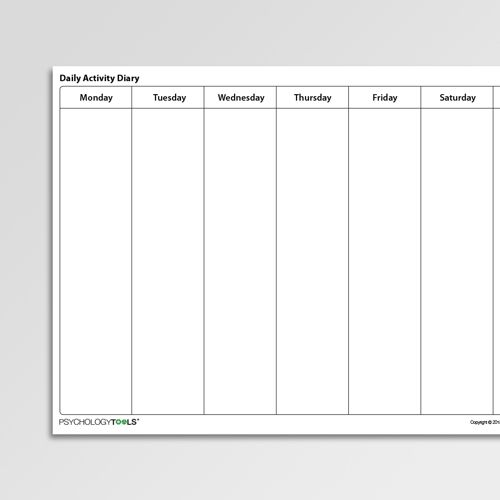
4.
DBT Skills Training Manual, Second Edition – Marsha M. LinehanThis book is not about CBT, but dialectical behavior therapy (DBT), which is a subset of CBT. DBT was originally developed by the author for the treatment of borderline personality disorder (BPD), but it is now used for other purposes such as treating eating disorders and traumatic brain injury (TBI).
This book is a comprehensive resource for any clinician administering DBT, as it includes several exercises and worksheets that clients can work through with or without their clinicians, along with serving as a guide to the therapist administering DBT.
This is a good way for a therapist familiar with CBT or not familiar with CBT to start learning about its subset treatment, DBT.
5.
The Dialectical Behavior Therapy Skills Workbook: Practical DBT Exercises for Learning Mindfulness, Interpersonal Effectiveness, Emotion Regulation & … (A New Harbinger Self-Help Workbook) – Matthew McKay, Jeffrey C. and Jeffrey Brantley
and Jeffrey BrantleyThis book is also focused on DBT, but it is slightly more oriented for self-help purposes than Linehan’s book. Clinicians can still find the book useful as a way to learn about DBT themselves, however.
The book contains several exercises for the purpose of building up four key skills in DBT: “distress tolerance, mindfulness, emotional regulation, and interpersonal effectiveness”.
The authors start with basic skills and then move on to more advanced skills, so people can use this to administer a full DBT treatment plan on themselves.
CBT Audio Books
Finally, these are the best audiobooks about CBT, for people who prefer listening to reading, or who would like to read books but just do not have the time.
1.
Cognitive Behavioural Therapy: A Practical Guide to CBT for Overcoming Anxiety, Depression, Addictions & Other Psychological Conditions [Audiobook] – Jane Aniston, Lesley Ann Fogle and Eddington PublishingThis audiobook aims to be an accessible, “jargon-free” way to learn about CBT so that listeners can quickly start treatment for a number of disorders.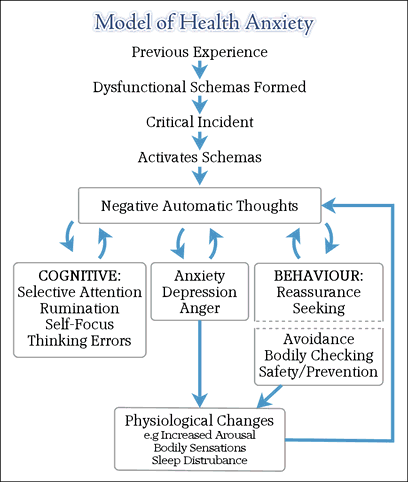 It is aimed at absolute beginners, so no matter how little you know about CBT you can start using its teachings in your own life.
It is aimed at absolute beginners, so no matter how little you know about CBT you can start using its teachings in your own life.
The author also highlights the fact that even people who are not necessarily diagnosed with anything can use CBT to improve their levels of wellbeing, making this book an excellent option for anyone who wants more control over their thought patterns.
2.
Cognitive Behaviour Therapy: Your Route out of Perfectionism, Self-Sabotage and Other Everyday Habits with CBT [Audiobook] – Avy Joseph, Ruth Sillers and Audible StudiosThis audiobook, from CBT practitioner Avy Joseph, is meant to show the listener ways they can use CBT to start feeling better about their lives. While the author claims CBT can help all sorts of people improve their wellbeing, the book focuses, especially on anxiety, resilience, and self-belief.
The audiobook walks through several scenarios that the listener might come upon in life and discusses different ways to react to those scenarios.
3.
Confidence and Success with CBT [Audiobook] – Avy Joseph, Ruth Sillers and Audible StudiosCo-written by the same author as above (and narrated by the same person from the above book as well), this book focuses on using CBT to increase your levels of confidence for the purpose of finding success in your life.
This audiobook is especially aimed at people who want to increase their levels of wellbeing independent of any disorders. It can also serve as a resource for therapists who want to help their clients use CBT to increase their levels of wellbeing.
Either of these audiobooks by Avy Joseph is a good option for anyone who wants to listen and learn about CBT from the perspective of an expert.
4.
Cognitive-Behavioral Therapy for Beginners: How to Use CBT to Overcome Anxieties, Phobias, Addictions, Depression, Negative Thoughts, and Other Problematic Disorders [Audiobook] – Maddison Taylor, Jim D. Johnston and Make Profits Easy LLCThis audiobook serves as a brief introduction to CBT for absolute beginners.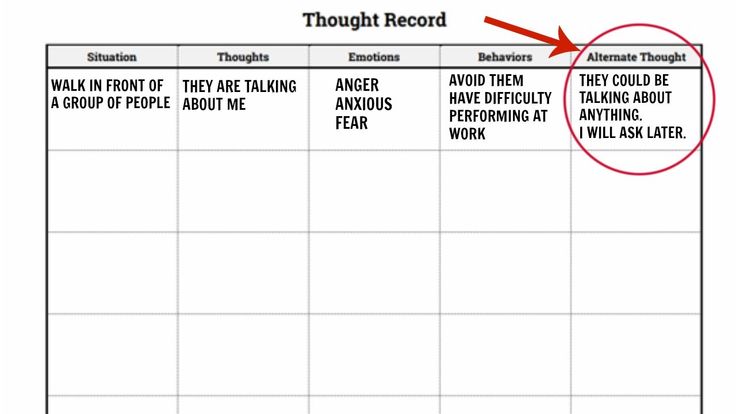 The author walks through what CBT is and what it is used for but does not dive too deeply into specific treatment plans or exercises that might constitute a CBT treatment plan.
The author walks through what CBT is and what it is used for but does not dive too deeply into specific treatment plans or exercises that might constitute a CBT treatment plan.
This is a good option for someone who wants to learn just a little bit about CBT to see if it is right for them, rather than someone looking for a comprehensive book which will help them put together a treatment plan.
5. Cognitive-Behavioral
Therapy: CBT Techniques to Manage Your Anxiety, Depression, Compulsive Behavior, PTSD, Negative Thoughts and Phobias [Audiobook] – Yasmin Bill, Jeannette Lehr and John LeddyThis audiobook is another extremely brief introduction to CBT for absolute beginners, but it relates CBT to mindfulness as well. This makes it a good option for anyone who is already interested in mindfulness who wants to start learning about CBT and how it can benefit their lives.
Like the above audiobook, it will not serve as a comprehensive introduction and will certainly not help you develop a treatment plan, but it can help you decide whether or not CBT is the right option for you.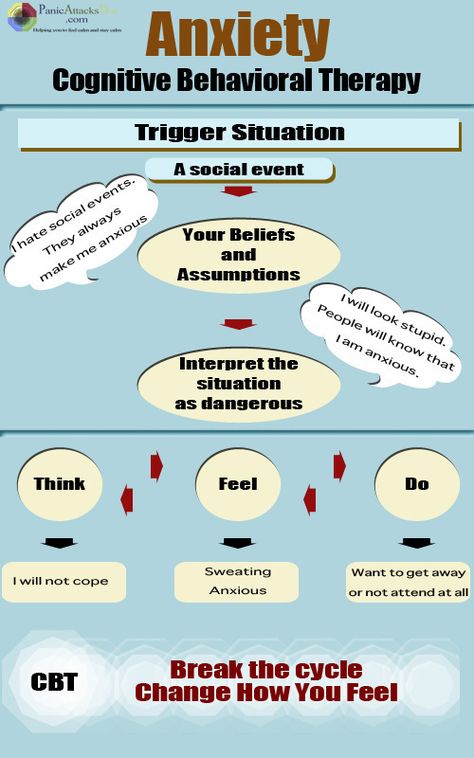 Either this book or the above book are good options for people who prefer to sample ideas before they dive too deeply into them.
Either this book or the above book are good options for people who prefer to sample ideas before they dive too deeply into them.
6. Mind Body Baby: How to Overcome Stress and Enhance Your Fertility with CBT, Mindfulness and Good Nutrition [Audiobook] – Ann Bracken and Yellow Kite
Finally, this audiobook focuses on CBT as it relates to fertility, making it an attractive choice for anyone who is trying to have a baby. The book is written by a fertility specialist, and includes a chapter on nutrition by a nutritionist, making it an authoritative approach to CBT for the purposes of increasing fertility levels.
The author also incorporates principles of mindfulness-based stress reduction (MBSR), so anyone who is already familiar with MBSR will find this audiobook an excellent way to start learning about CBT for fertility.
Cognitive Behavioural Therapy for Dummies (Short review + Summary)
This book discusses CBT for the purposes of using it to treat anxiety, addiction, or several other issues in your own life. Two therapists, Rhena Branch and Rob Wilson, who use CBT in their own practices, wrote it.
Two therapists, Rhena Branch and Rob Wilson, who use CBT in their own practices, wrote it.
As a book in the “for Dummies” series, it is meant to be accessible and easy-to-read, but the extremely-qualified authors ensure that it is still based in evidence-based research.
This is an excellent option for clients who want to learn about CBT, regardless of their knowledge of the subject or knowledge of any psychological subjects.
Cognitive Behavioral Therapy: Teach Yourself (Short review + Summary)
The updated edition of one of the first books on CBT for the masses, this book will first teach you what CBT is, then teach you how to use it for your benefit.
The author is involved with the National Health Service of the United Kingdom’s committee on how to treat depression, but the book discusses the use of CBT for other thought patterns as well.
This book is a good mix of academically-informed and accessible so the information continued within is accurate but easily-digestible.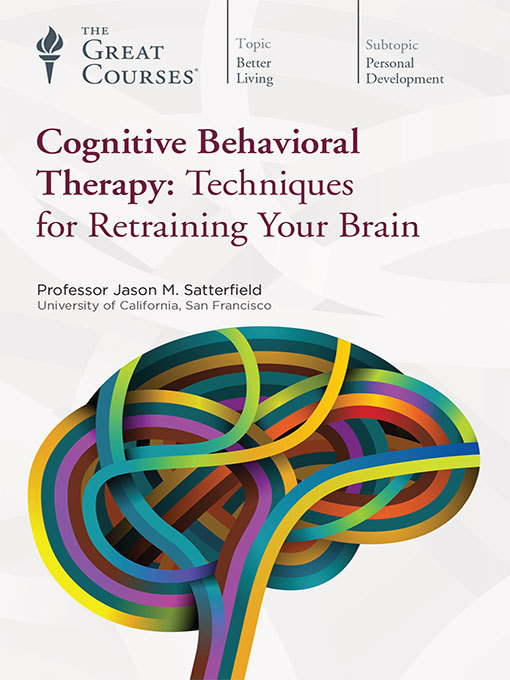
A Take-Home Message
CBT is an exciting therapy which has a wide range of intended purposes, and it can be used with or without the aid of a therapist. All of these books are good ways to learn about CBT, but some of them have more specific purposes than others (for example, treating anxiety rather than eating disorders).
It should also be noted that some are written by psychologists with years of CBT experience, while others are written by people who have used CBT to improve their own lives, and some readers may have a preference for one type of author over the other. Make sure that you do some research before picking a book on CBT so that you learn about it in a way that can best benefit your specific situation.
We hope you enjoyed reading this article. For more information, don’t forget to download our 3 Positive CBT Exercises for free.
Freedom from Anxiety - Association for Cognitive Behavioral Psychotherapy
Author: DV Kovpak
Let me introduce you to the book “Freedom from Anxiety”, translated into Russian and published this year by the joint efforts of the Piter Publishing House and the Association of Cognitive Behavioral Psychotherapy ".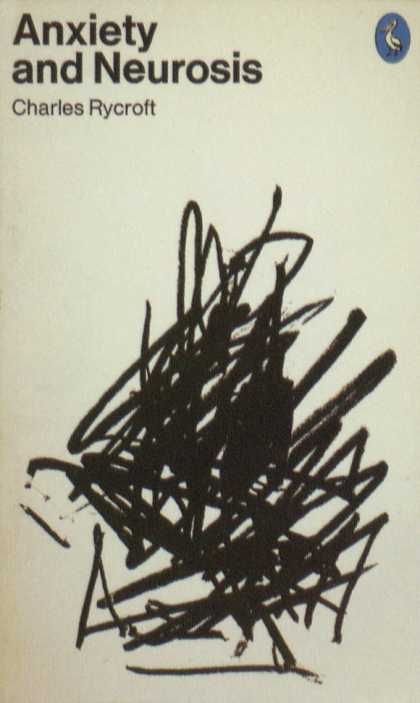 Robert Leahy is one of today's most famous, experienced and creative cognitive behavioral therapists.
Robert Leahy is one of today's most famous, experienced and creative cognitive behavioral therapists.
The closest student of Aaron Beck, his friend and colleague, in every possible way contributing to the spread and development of cognitive-behavioral therapy throughout the world, who created his own concept of emotional schemas. Robert is a leading specialist in the treatment of emotional disorders with vast experience in treating anxiety-phobic patients, a world-class expert in the most proven direction of psychotherapy in terms of effectiveness today and the "gold standard" of non-drug treatment of anxiety and fears of the World Health Organization. He has written and edited hundreds of articles and 25 books. In the eighties, he actively worked in Philadelphia under the strict guidance of A. Beck, and then went to conquer New York, the stronghold of psychoanalysts - Manhattan, and created the American Institute of Cognitive Behavioral Therapy there.
What is anxiety? How it manifests itself in our sensations, in bodily states and behavior.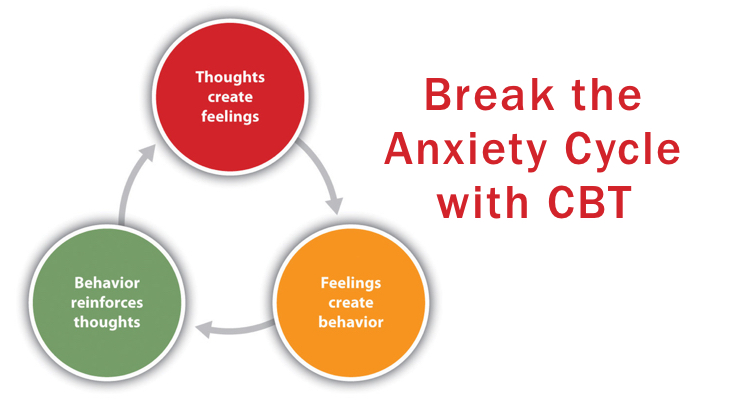 Its leading causes, methods of overcoming and eliminating excessive and inadequate fears, anxieties, anxiety and other emotional disorders and disorders. How to cope with panic disorder and agoraphobia, generalized anxiety disorder and obsessive-compulsive disorder, simple phobias and post-traumatic stress disorder? This book will tell you about it. She will teach methods and techniques, and most importantly, she will show new useful, adaptive strategies that will allow you to accept and live emotions without becoming their hostages. Do not try to hide from them or constantly control, but to see the diversity of experience in life and be able to use its entire emotional spectrum for your own benefit and discover with surprise the tolerability and benefits of life in all its amazing diversity.
Its leading causes, methods of overcoming and eliminating excessive and inadequate fears, anxieties, anxiety and other emotional disorders and disorders. How to cope with panic disorder and agoraphobia, generalized anxiety disorder and obsessive-compulsive disorder, simple phobias and post-traumatic stress disorder? This book will tell you about it. She will teach methods and techniques, and most importantly, she will show new useful, adaptive strategies that will allow you to accept and live emotions without becoming their hostages. Do not try to hide from them or constantly control, but to see the diversity of experience in life and be able to use its entire emotional spectrum for your own benefit and discover with surprise the tolerability and benefits of life in all its amazing diversity.
CBT does not focus on drugs. The treatment does not stretch over years, patients show significant improvements from the very beginning. And many of them manage to change the quality of their life in just a few months or even weeks of working with a therapist.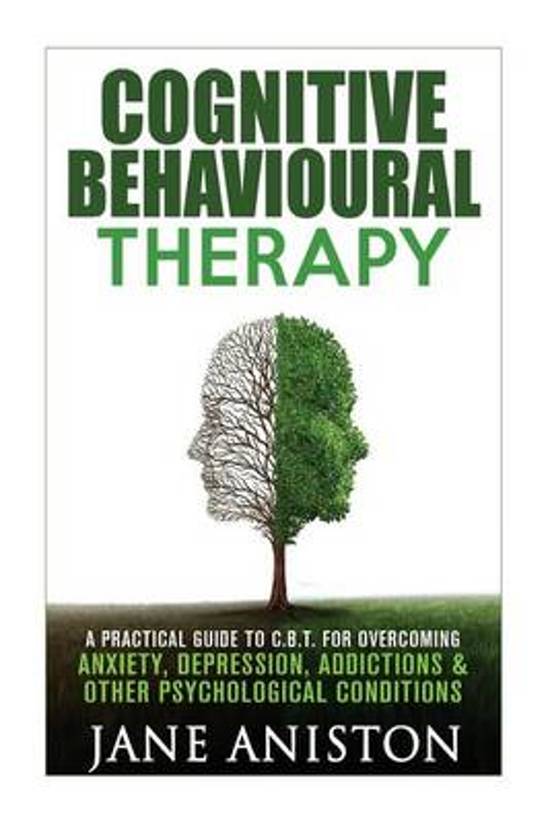 Most patients continue to maintain the desired state through awareness and development of practical skills of self-regulation.
Most patients continue to maintain the desired state through awareness and development of practical skills of self-regulation.
The self-help techniques offered in this book are based on modern clinical research, as well as the personal experience of the author, a true master of his craft, who has worked with many hundreds of anxious clients for decades in the heart of New York, near Central Park and the fashionable streets of this modern capital of the world. To be an authoritative leader in the thick of the psychotherapeutic mainstream, focused on Manhattan, Robert Leahy is allowed by the deepest knowledge of modern psychotherapy, training and work with the founder of cognitive therapy Aaron Beck, who recognizes in Leahy his leading student and worthy successor to his life's work, a surprisingly wide cultural outlook and filigree knowledge of the method and techniques of cognitive-behavioral therapy.
In this book, he generously shares the secrets of his mastery and plows open the storehouses of his knowledge, which will allow the interested reader not only to reduce their level of anxiety and anxiety, but to truly begin to live a different, more fulfilling, harmonious and happy life, removing the foundations from it.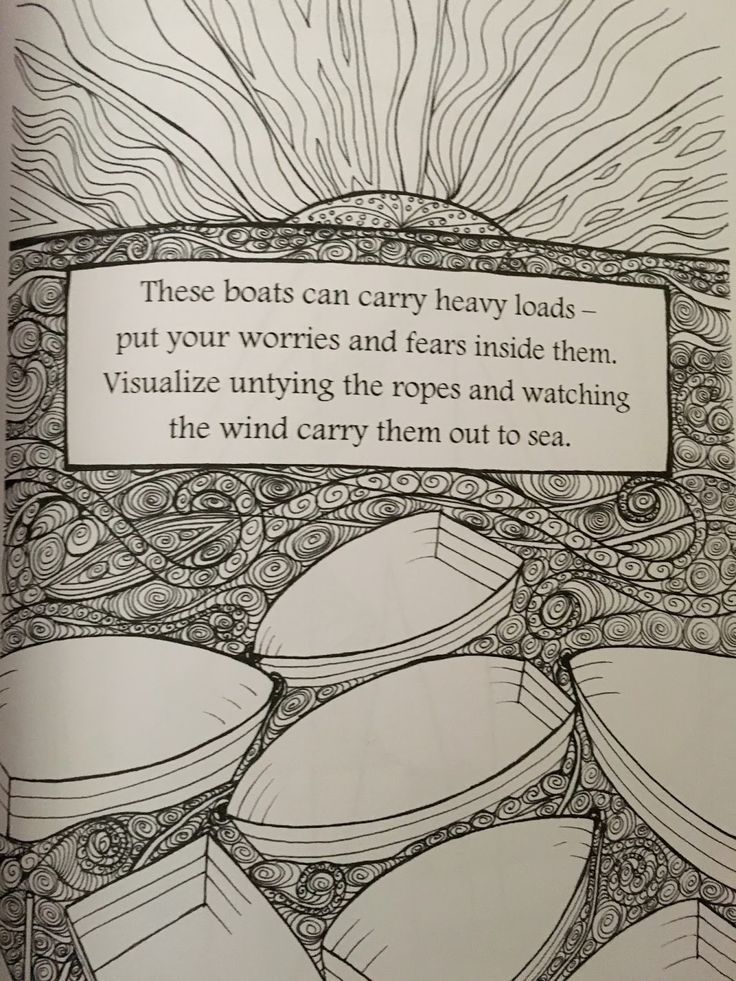 their inadequate emotions and experiences and freeing themselves for other choices, habits and values. To do this, you just need to have an idea of your resources, be open to new methods, use them consciously, consistently and persistently, and be ready to start changing life for the better today, without putting it off in a foggy tomorrow.
their inadequate emotions and experiences and freeing themselves for other choices, habits and values. To do this, you just need to have an idea of your resources, be open to new methods, use them consciously, consistently and persistently, and be ready to start changing life for the better today, without putting it off in a foggy tomorrow.
This book is the best present for the seeker. The case when the master has already come to the one who is ready and is right in his hands. This book can be your guide to personal change. It will highlight the main steps of treatment and show you what lies ahead. It will allow you to learn the basic "rules" of behavior in case of a threat that evolution has written into the human brain. Explore why these rules no longer apply in modern life and how they cause us to focus on illusory dangers while ignoring the real issues. The book will reveal some of the beliefs that underlie these rules and teach you how to challenge them. By doing this, you can begin to rewrite the rules of your life by revisiting your assessments of what is safe and what is not. And this reassessment will be based on real life experience, and not on irrational thoughts and atavistic habits. This is the key to overcoming anxiety: to experience what scares you in a safe context. And no matter how deep your fears have penetrated your psyche, it is never too late to learn how to rationally assess dangers.
And this reassessment will be based on real life experience, and not on irrational thoughts and atavistic habits. This is the key to overcoming anxiety: to experience what scares you in a safe context. And no matter how deep your fears have penetrated your psyche, it is never too late to learn how to rationally assess dangers.
The next six chapters, four through nine, describe ways to challenge destructive ideas. Each of the six recognized anxiety disorders is discussed in detail: what they are, how they function, and what form the anxiety rules take in each individual case. In each of the six chapters that describe them, you will find step-by-step instructions for applying techniques to deal with anxiety, first in imaginary situations, and then in real ones. In the appendix to this book, the author has compiled a series of diagnostic questionnaires, examples of how you can categorize your anxious thoughts and change them, how to make a balanced diet and determine an adequate level of physical activity.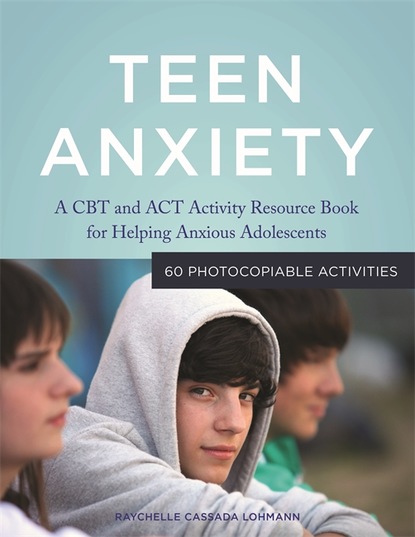 He also included useful information on depression and suicide risks, medications, insomnia, relaxation and mindfulness. By opening the sections of the application that interest you, you will learn more about specific types and techniques of treatment. Using these techniques, you will be able to reverse your anxieties without starting a war with them and without trying to destroy them. You will see that the key to success is to distance yourself from fears, change your point of view and stop being a victim of your own mind. The main thing to understand is that the level of fear is determined not by the situation in which you find yourself, but by the interpretation of what is happening. When your approach to interpretation changes, the very perception of frightening and safe will change.
He also included useful information on depression and suicide risks, medications, insomnia, relaxation and mindfulness. By opening the sections of the application that interest you, you will learn more about specific types and techniques of treatment. Using these techniques, you will be able to reverse your anxieties without starting a war with them and without trying to destroy them. You will see that the key to success is to distance yourself from fears, change your point of view and stop being a victim of your own mind. The main thing to understand is that the level of fear is determined not by the situation in which you find yourself, but by the interpretation of what is happening. When your approach to interpretation changes, the very perception of frightening and safe will change.
Ahead of you is not just an acquaintance with a reliable guide to the route of recovery from excessive worries, worries, anxieties and fears, but a real exciting journey into your future new exciting opportunities and benefits of an active, rich and fulfilling life. Such a life will again become a priceless gift, as it was from birth. Behind the clouds, the sun was always waiting for you. And Robert Leahy knows how to rediscover it for you.
Such a life will again become a priceless gift, as it was from birth. Behind the clouds, the sun was always waiting for you. And Robert Leahy knows how to rediscover it for you.
Personally, the Association for Cognitive Behavioral Therapy and its members are pleased and proud of our friendship with the author. We were lucky enough to organize the first visit of Robert Leahy to Russia, holding his first seminar in Russia on cognitive behavioral therapy for worry and anxiety. It was held with great success on May 16, 2016 in St. Petersburg.
We were introduced in absentia by Donna Sudak, who for 14 years headed the Academy of Cognitive Therapy, which was also headed by Robert. We first met him in person in the summer of 2015 in New York, at his institute, which I happened to visit the previous year quite by accident and spontaneously, without knowing Robert and not even knowing him in absentia. He was away that day, and our acquaintance and meeting miraculously took place exactly one year later. Robert was very welcoming and hospitable. He showed off his institute, introduced me to the staff, and even invited him to dine at his favorite Italian restaurant nearby. According to him, this is one of the three best Italian restaurants in New York, which was really confirmed by its excellent cuisine and atmosphere. And most importantly, there was a very inspiring conversation and lively contact with the most interesting personality of a great professional and wonderful person - Robert, and for Bob's friends, Leahy. It was there that I decided to do everything possible and impossible for Robert's visit to Russia and the opportunity to learn from him and our colleagues who practice CBT in Russia.
Robert was very welcoming and hospitable. He showed off his institute, introduced me to the staff, and even invited him to dine at his favorite Italian restaurant nearby. According to him, this is one of the three best Italian restaurants in New York, which was really confirmed by its excellent cuisine and atmosphere. And most importantly, there was a very inspiring conversation and lively contact with the most interesting personality of a great professional and wonderful person - Robert, and for Bob's friends, Leahy. It was there that I decided to do everything possible and impossible for Robert's visit to Russia and the opportunity to learn from him and our colleagues who practice CBT in Russia.
Many cognitive therapists have Eastern European or Russian roots or connections to Russia. We learned about such roots of A. Beck, A. Ellis, J. Wolpe, A. Lazarus, A. Bandura, D. Meichenbaum, A. Freeman and many other theorists and practitioners of CPT. There is such a connection with Robert. This is his beloved wife and muse. Robert Leahy dedicated this book to her. Her name is Helen, or rather Elena. She is a direct descendant of the famous chemist Butlerov. On another line, it is connected with the history of Russian ballet! Therefore, her choice is not accidental - she is a professional chemist and has been passionate about ballet for many years!
This is his beloved wife and muse. Robert Leahy dedicated this book to her. Her name is Helen, or rather Elena. She is a direct descendant of the famous chemist Butlerov. On another line, it is connected with the history of Russian ballet! Therefore, her choice is not accidental - she is a professional chemist and has been passionate about ballet for many years!
Our Association for Cognitive Behavioral Therapy, its members and the initiative group are pleased and proud to be friends with Bob, to organize Robert Leahy's first visit to Russia, to organize his first workshop in Russia on cognitive behavioral therapy for worry and anxiety. It was held with great success on May 16, 2016 in the Imperial hall of the Taleon Imperial Hotel, an eighteenth-century palace located in the very center of St. Petersburg, at 15 Nevsky Prospekt. Robert was impressed by the beauty of St. at the Mariinsky Theatre, the interiors of its hotel and the venue of the seminar, culture, traditions and science, the high level of knowledge and training of the seminar participants.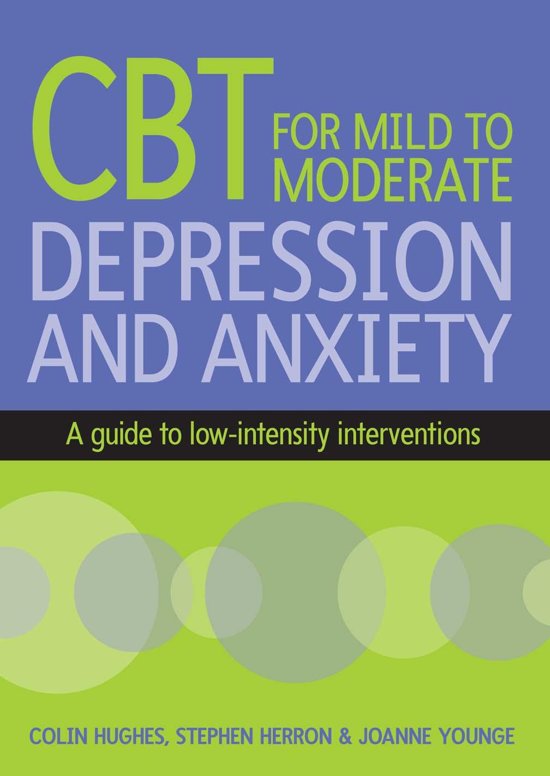 We are proud of the honor that fell to us for the first time to show Russia and its northern capital to our dear, respected and beloved guest and friend. And, now I am happy and rejoice at the implementation of our initiative, our participation in the preparation and publication of the first book translated into Russian by Robert Leahy. I wish the readers of this book to get the most out of it, meaning, knowledge and skills, which were generously endowed by a wonderful author, a master of his craft and a talented person with the broadest cultural horizons, a subtle feeling soul and a warm, kind heart.
We are proud of the honor that fell to us for the first time to show Russia and its northern capital to our dear, respected and beloved guest and friend. And, now I am happy and rejoice at the implementation of our initiative, our participation in the preparation and publication of the first book translated into Russian by Robert Leahy. I wish the readers of this book to get the most out of it, meaning, knowledge and skills, which were generously endowed by a wonderful author, a master of his craft and a talented person with the broadest cultural horizons, a subtle feeling soul and a warm, kind heart.
Dmitry Viktorovich Kovpak, psychotherapist, candidate of medical sciences, associate professor of the department of general, medical psychology and pedagogy of the North-Western State Medical University named after I. I. Mechnikov, head physician of the Center for Emotional Correction, head physician of the Clinic for the Treatment of Depression and Phobias, Center -behavioral psychotherapy and counseling, scientific director of the section of psychotherapy and psychological counseling of the St.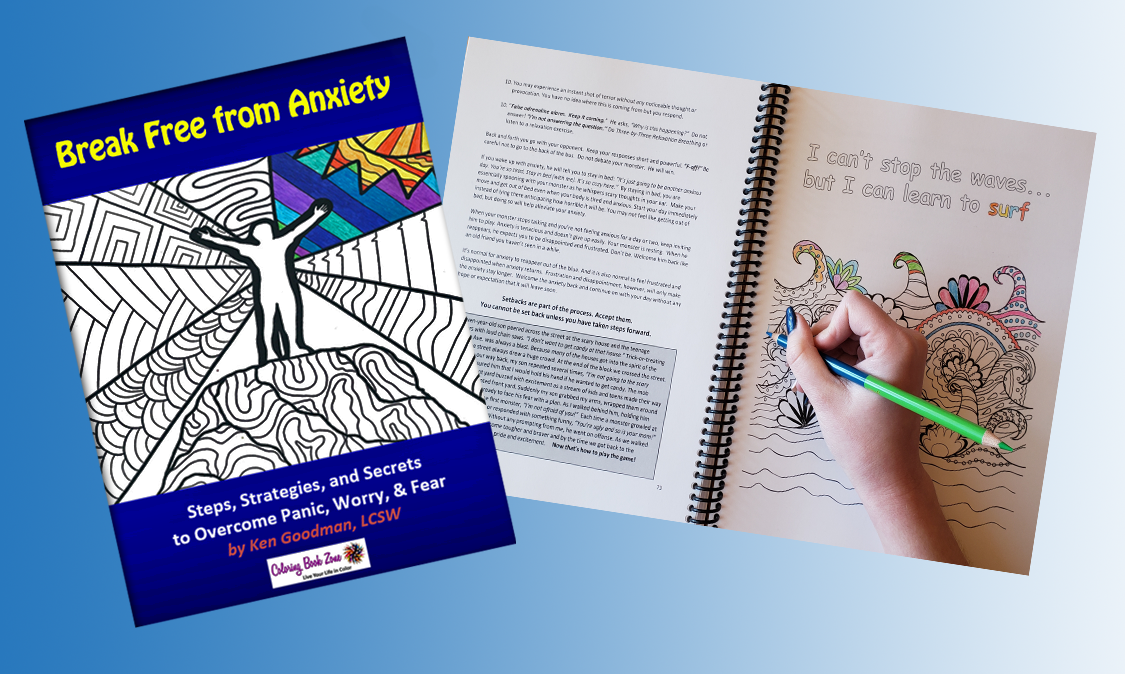 Petersburg Psychological Society, co-chair of the section of cognitive-behavioral psychotherapy of the Russian Psychotherapeutic Association, Chairman of the Association of Cognitive-Behavioral Psychotherapy.
Petersburg Psychological Society, co-chair of the section of cognitive-behavioral psychotherapy of the Russian Psychotherapeutic Association, Chairman of the Association of Cognitive-Behavioral Psychotherapy.
Reading Room: Anxiety and Worry, Clark & Beck
At the end of last year, a Russian translation of the bestseller by David Clark and Aaron Beck, Anxiety and Worry: A Cognitive Behavioral Approach, was published. It is originally called The Anxiety and Worry Workbook: The Cognitive Behavioral Solution.
The English title contains the keyword - workbook - or workbook - and this accurately describes the essence of the book. This book is primarily for patients (clients) , and I believe that it will only work with simultaneous psychotherapeutic support. The authors write the same thing, by the way: “methods are most effective when used in therapy with an experienced mental health professional.”
Rating: 5
Title: Anxiety and Worry: A Cognitive Behavioral Approach
Author: David A. Clark, Aaron T. Beck
Clark, Aaron T. Beck
Publisher: Dialectic-Williams 9014-9855 ISBN:
49-1
Year of issue: 29.11.2019
It's funny that on Litres in the description of the book it says that it is "designed for practicing psychologists, and in addition, it will be useful to clients." Guys, in fact, the opposite is true 😁 - designed for clients, and, perhaps, useful for psychologists.
About the book
I will not explain who Clark and Beck are, because they are pillars of cognitive-behavioral psychotherapy. If you are a psychologist with a specialization in CBT, you know them for sure. If you are a client, just trust that these are cool guys who know a lot about what they write about.
The book is divided into parts:
- general part about anxiety, aka psychoeducation, aka normalization of the state so that it doesn’t scare so much in itself
- analysis of individual thoughts, triggers (what provokes) and fears
- explanation, what is an exposition, why do it and drawing up an individual exposition plan
- and further separate sections on panic, social anxiety and general anxiety
Do not expect miracles from a book, however, this is true for any problems. I think if you give this book, or rather, exercises from it , 1 hour a day, then in a month and a half you will feel the difference.
I think if you give this book, or rather, exercises from it , 1 hour a day, then in a month and a half you will feel the difference.
Important: A book by itself, even if you read it cover to cover, will not correct your thinking or help you overcome your anxiety. And exercises can do it.
You know what they say - you can't learn to swim just by looking at the water. So if you seriously want to change something about your worries, it's not enough just to look at Clark and Beck's book. Need to do something. Do not waste money if, in all honesty, you are not going to do anything.
👉 On the same topic: Why Cognitive Behavioral Therapy is a Doing and Not a Talking Therapy
There are more than enough tasks, starting from the very first chapter. The Russian translation can be bought in paper version (but expensive, of course, from 1000 ₽), and the electronic version, unfortunately, cannot be downloaded, only read in the application.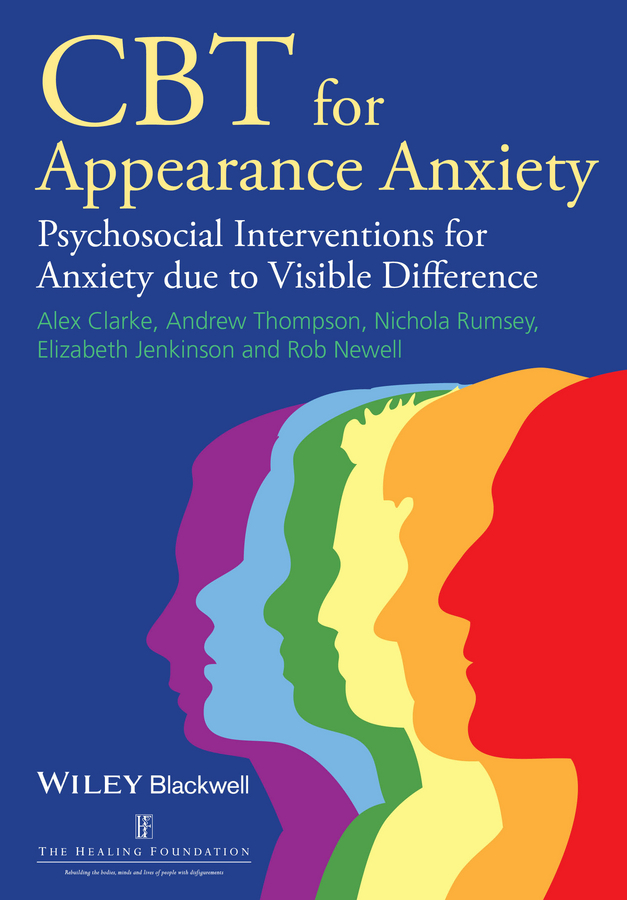
The electronic version on Litres costs 600 rubles - if you buy on the site. I hope you know that there is a markup on all books in the Litres iPhone app? There it will cost 699, so buy online.
In paper form, on the one hand, it is convenient to do exercises right there - special places and tables are left there. But for 1000 rubles, I would read the electronic version, and do the exercises somewhere else. 😄
The conclusion, in general, is this: this book is an excellent guide for self-help if your task is to cope on your own. It won't be easy, but it's possible.
Is Anxiety and Worry Necessary for Psychologists
I think it is only for those practicing psychologists who are just starting to study the cognitive-behavioral approach. Use the book like a simple and practical version of protocol for cognitive-behavioral therapy for anxiety disorders, also in Russian.
It is clear that in this book there are no explanations of some deep things, conceptualizations, models, etc.